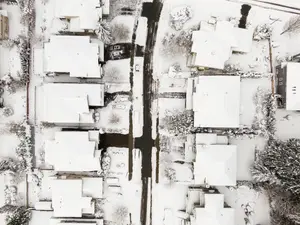Climate change is no longer a distant threat but an immediate reality reshaping our world. The repercussions of this global phenomenon are keenly felt in the realm of homeowners insurance, where the landscape is rapidly evolving to accommodate the increasing frequency and severity of natural disasters.
From hurricanes to wildfires, floods to storms, the impact of climate change on insurance is undeniable, with implications ranging from soaring premiums to limited coverage options.
Table of contents
Increased Frequency and Severity of Natural Disasters
The hallmark of our changing climate is the alarming uptick in the occurrence and intensity of natural disasters. Climate models predict a future where extreme weather events become more commonplace, leaving a trail of destruction in their wake. As hurricanes grow stronger, wildfires rage fiercer, and floods inundate communities with greater frequency, insurance companies are left grappling with the mounting financial burden of these catastrophic events. With each disaster, insurers are compelled to shell out substantial sums in claims payments, driving up the cost of premiums for homeowners nationwide.
In regions deemed high-risk for climate-related disasters, the repercussions are even more pronounced. Homeowners in these areas often face exorbitant premiums or outright denials of coverage as insurers seek to mitigate their exposure to mounting risks. The fallout is twofold: financial strain for homeowners struggling to afford adequate coverage and increased vulnerability for communities ill-equipped to weather the storm.
In response to this shifting landscape, homeowners must be proactive in safeguarding their homes and financial well-being against the ravages of climate change. But where do we begin? How can homeowners navigate the murky waters of insurance in an era defined by uncertainty and upheaval? In the following sections, we delve deeper into the strategies and solutions aimed at fortifying homes and insurance policies against the challenges posed by climate change.
Higher Premiums and Limited Coverage
As the toll of climate change-induced disasters mounts, insurance companies find themselves at a crossroads, grappling with the economic fallout of these catastrophic events. With each hurricane, wildfire, or flood, insurers are forced to shell out significant sums to policyholders, resulting in a ripple effect across the industry. The inevitable consequence? Higher premiums for homeowners, particularly those residing in high-risk areas where the specter of disaster looms largest.
For homeowners already burdened by the rising cost of living, escalating insurance premiums can pose a significant financial strain, often stretching budgets to their breaking point. Compounding the issue is the phenomenon of limited coverage, where insurers, wary of mounting risks, opt to withdraw coverage altogether in regions deemed too perilous to insure. This leaves homeowners in vulnerable communities grappling with the daunting prospect of protecting their homes and livelihoods without the safety net of insurance.
The Importance of Adequate Coverage
In the face of mounting uncertainty, one thing remains abundantly clear: the need for robust insurance coverage has never been more pressing. As the frequency and severity of natural disasters continue to escalate, homeowners must take proactive steps to ensure they are adequately protected against potential risks. The first line of defense? A comprehensive insurance policy tailored to address the specific hazards endemic to your region.
Begin by scrutinizing your existing policy to ascertain whether it provides adequate coverage for the perils most prevalent in your area. For homeowners residing in flood-prone regions, securing flood insurance is paramount, shielding against the devastating financial fallout of inundation. Similarly, residents of wildfire-prone areas must assess whether their policy extends coverage for fire-related damages, including the cost of rebuilding or repairing their homes.
Equally crucial is ensuring that your coverage limits align with the true cost of recovery in the aftermath of a disaster. Conduct a thorough assessment of your home’s value and the potential expenses associated with rebuilding or replacing damaged property, factoring in inflation and market fluctuations. By recalibrating your coverage limits to reflect the current realities of your property’s worth, you can safeguard against the risk of being underinsured in the event of a catastrophe.
Climate-Resilient Home Improvements
In addition to securing the right insurance coverage, homeowners can take proactive measures to make their homes more resilient to climate change-related events. This may include:
- Upgrading roofing materials to withstand high winds or hail
- Installing storm shutters or impact-resistant windows
- Elevating homes in flood-prone areas
- Creating defensible space around your property to reduce wildfire risk
Investing in climate-resilient home improvements can not only protect your home from damage but may also result in lower insurance premiums, as insurers often offer discounts for homes with these features.
Disaster Preparedness and Response
In an era defined by the unpredictability of climate change, the adage “hope for the best, prepare for the worst” has never rung truer. For homeowners navigating the treacherous terrain of climate-induced disasters, proactive disaster preparedness is not just a recommendation – it’s a lifeline. Begin by crafting a comprehensive disaster preparedness plan, meticulously outlining steps to be taken before, during, and after a calamitous event.
Central to any effective preparedness strategy is the development of an evacuation route tailored to your locale’s unique topography and susceptibility to natural disasters. Identify safe havens and emergency shelters in your vicinity, ensuring that every member of your household is familiar with the designated evacuation route. Equally vital is the creation of an emergency supply kit stocked with essential provisions such as non-perishable food, water, medication, and first-aid supplies, sufficient to sustain your family for a minimum of 72 hours.
Moreover, establish a robust communication plan to facilitate seamless coordination and ensure the safety of your loved ones in the event of separation during an evacuation. Designate a central point of contact and establish alternative communication channels, including mobile phones, two-way radios, and social media platforms, to overcome potential disruptions to traditional communication networks.
In the aftermath of a disaster, swift action is paramount. Document any damage inflicted upon your home and belongings with meticulous detail, capturing photographs and videos to substantiate your insurance claim. Promptly contact your insurance provider to initiate the claims process, furnishing them with comprehensive documentation to expedite the assessment and resolution of your claim.
Embracing Resilience: A Call to Action
As climate change continues to reshape the fabric of our world, the imperative for homeowners to adapt and fortify their defenses against its ravages has never been more urgent. By cultivating a deeper understanding of the interplay between climate change and homeowners insurance, homeowners can navigate the evolving landscape with confidence and foresight.
Embrace the ethos of resilience by fortifying your home against climate-induced perils through strategic investments in climate-resilient home improvements. Elevate your home’s resilience to withstand the onslaught of extreme weather events, from hurricanes and wildfires to floods and storms. Leverage the power of insurance as a shield against the financial fallout of climate-related disasters, ensuring that your policy provides robust coverage tailored to your unique circumstances.
In conclusion, the specter of climate change casts a long shadow over the realm of homeowners insurance, underscoring the imperative for proactive adaptation and preparedness. By embracing resilience, fortifying your home against climate-induced perils, and cultivating a deeper understanding of the evolving insurance landscape, you can safeguard your home and financial well-being in the face of an increasingly uncertain climate.
FAQ
Climate change increases the frequency and severity of natural disasters, leading to higher premiums and limited coverage options for homeowners.
Homeowners can ensure adequate coverage, invest in climate-resilient home improvements, and develop disaster preparedness plans to mitigate risks.
Adequate insurance coverage ensures that homeowners are financially protected against the costs of rebuilding or repairing their homes after a disaster.
Homeowners can develop evacuation routes, assemble emergency supply kits, and document damage to expedite the insurance claims process.
Insurance companies play a crucial role in promoting climate resilience by offering tailored coverage options and incentivizing climate-resilient home improvements.





